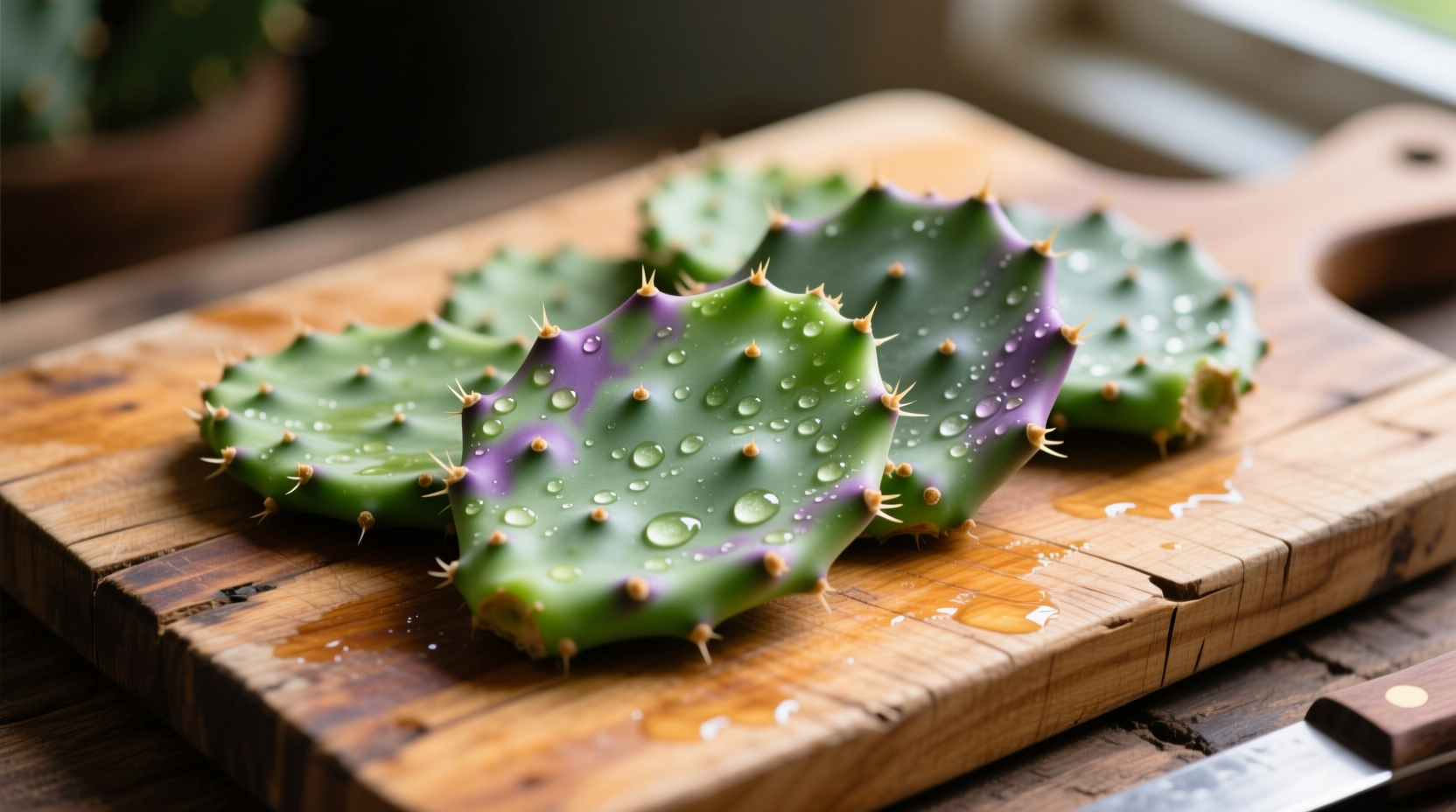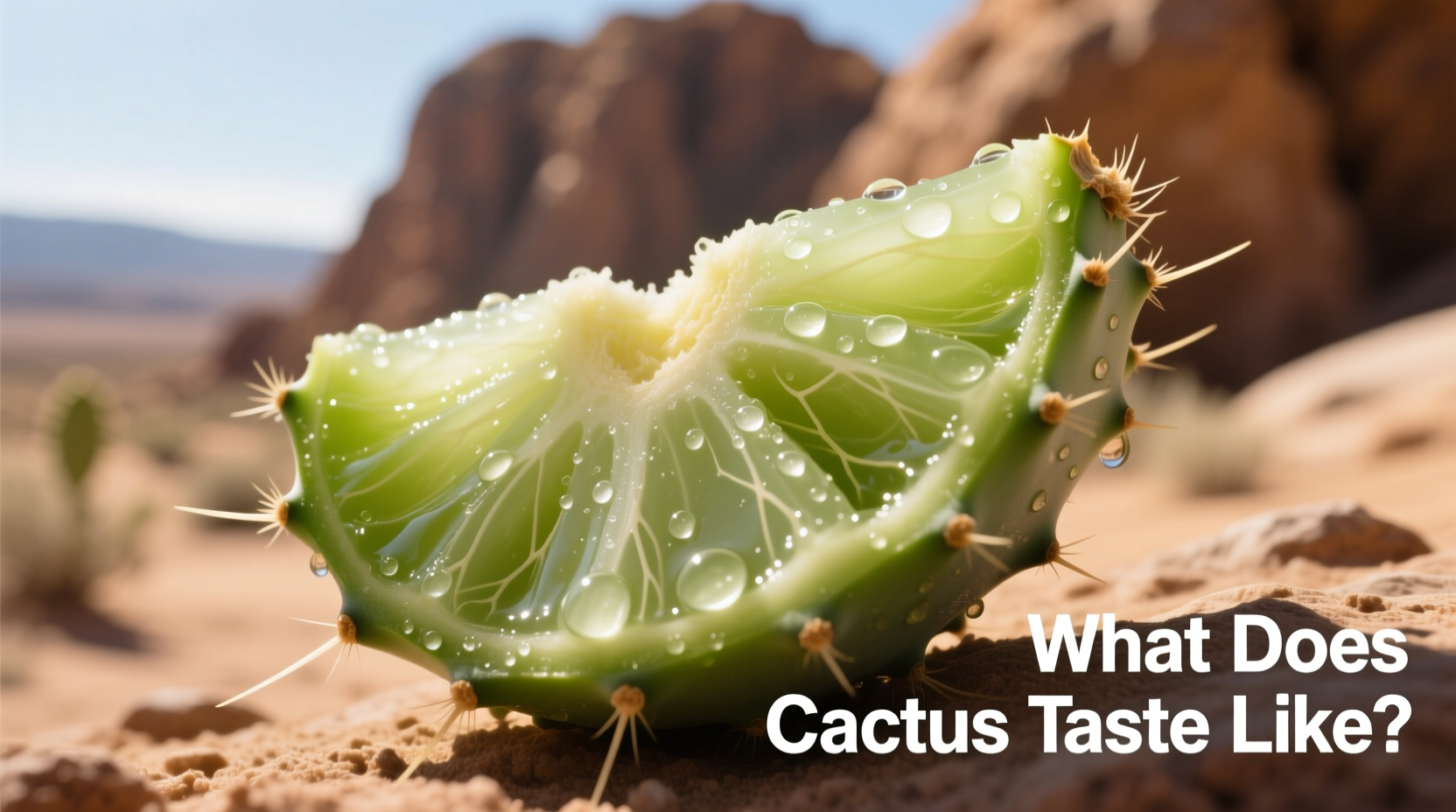Understanding Cactus Flavor Profiles
When exploring what does cactus taste like, it's essential to distinguish between the different edible varieties. The most commonly consumed cactus worldwide is Opuntia ficus-indica, known as nopales or prickly pear cactus. This variety forms the backbone of traditional Mexican cuisine and has been cultivated for food for thousands of years.
According to agricultural research from the University of Arizona's College of Agriculture and Life Sciences, nopales contain malic acid (the same compound found in green apples), which contributes to their distinctive tangy profile. The flavor intensity varies based on growing conditions, season, and preparation methods.
Breaking Down the Taste Experience
When you bite into properly prepared cactus, you'll notice several distinct sensory elements:
- Primary flavor: A clean, vegetal taste reminiscent of green beans or asparagus
- Secondary notes: Subtle citrus undertones with a slight earthiness
- Texture: Crisp when raw, becoming tender yet slightly gelatinous when cooked
- Aftertaste: Mildly tangy with minimal bitterness in properly prepared specimens
Unlike many assume, edible cactus doesn't taste like desert survival food—it's a refined ingredient with culinary versatility. The taste comparison to green beans holds particularly true for younger, tender pads harvested in spring, while mature pads develop more pronounced earthy notes.
| Cactus Variety | Raw Flavor Profile | Cooked Flavor Profile | Texture Characteristics |
|---|---|---|---|
| Nopales (prickly pear pads) | Mildly tart, vegetal | Earthy with subtle citrus notes | Crisp-tender, slightly mucilaginous |
| Prickly pear fruit (tuna) | Sweet, watermelon-like | Intensified berry flavor | Juicy with edible seeds |
| Dragon fruit | Mildly sweet, kiwi-like | Subtle flavor, best raw | Crisp with tiny black seeds |
How Preparation Affects Cactus Flavor
One critical factor many home cooks overlook when asking what does cactus taste like is how preparation dramatically influences the final flavor. Traditional Mexican culinary techniques have evolved specifically to optimize cactus taste:
Raw preparation: Young pads can be eaten raw in salads, offering the brightest, most acidic flavor profile. The University of California's Agriculture and Natural Resources department notes that raw nopales contain higher levels of malic acid, creating a more pronounced tartness.
Cooked preparation: When cooked (typically boiled or grilled), cactus undergoes significant flavor transformation. The natural mucilage reduces, bitterness diminishes, and earthy notes become more prominent. Traditional preparation often includes cooking with onions, garlic, or lime to complement the natural flavor profile.
Improper preparation can lead to overly slimy texture or unpleasant bitterness—common reasons why some people form negative impressions about what does cactus taste like. The key is proper cleaning to remove spines and glochids, followed by appropriate cooking time.

Culinary Applications and Pairings
Understanding what does cactus taste like opens doors to numerous culinary applications. In Mexican cuisine, nopales appear in:
- Nopales salad: Diced cactus with tomato, onion, and lime juice
- Huevos con nopales: Scrambled eggs with sautéed cactus
- Nopales stew: Slow-cooked with peppers and spices
- Grilled nopales: Served as a side dish with smoky char notes
The flavor profile makes cactus remarkably versatile. Its mild vegetal notes pair well with:
- Citrus elements (especially lime and orange)
- Garlic and onion family ingredients
- Chili peppers of varying heat levels
- Cheeses like queso fresco or feta
- Tomatoes and tomatillos
Nutritional Benefits Enhancing the Flavor Experience
Beyond taste, cactus offers impressive nutritional properties that complement its flavor profile. According to USDA nutritional data, 100g of cooked nopales contains:
- Only 17 calories
- 3g dietary fiber (12% of daily value)
- Rich in magnesium, calcium, and potassium
- Contains antioxidants like betalains
- Natural electrolytes that enhance hydration
These nutritional elements contribute to cactus's clean, refreshing taste that doesn't overwhelm the palate—making it an ideal ingredient for health-conscious cooking without sacrificing flavor.
Seasonal and Regional Flavor Variations
When evaluating what does cactus taste like, consider these important contextual factors:
- Harvest season: Spring-harvested pads have the mildest, most delicate flavor
- Pad maturity: Younger pads are less fibrous with brighter acidity
- Geographic origin: Cactus from arid regions develops more concentrated flavors
- Cultivation methods: Organically grown cactus often has more complex flavor notes
Traditional Mexican markets often categorize nopales by harvest date, with "primavera" (spring) pads commanding premium prices for their superior taste and texture—demonstrating how deeply flavor considerations are embedded in cactus culinary culture.











 浙公网安备
33010002000092号
浙公网安备
33010002000092号 浙B2-20120091-4
浙B2-20120091-4